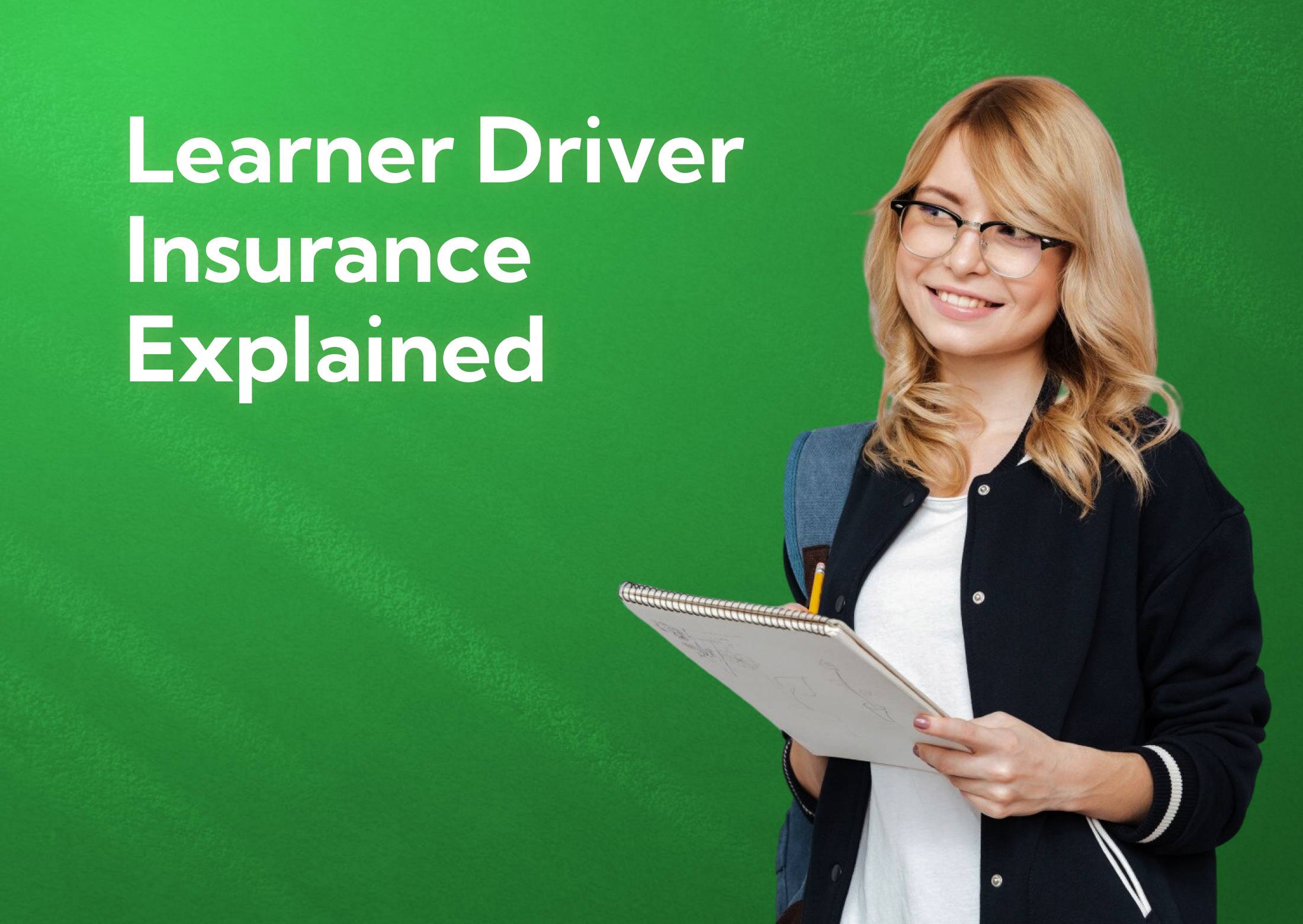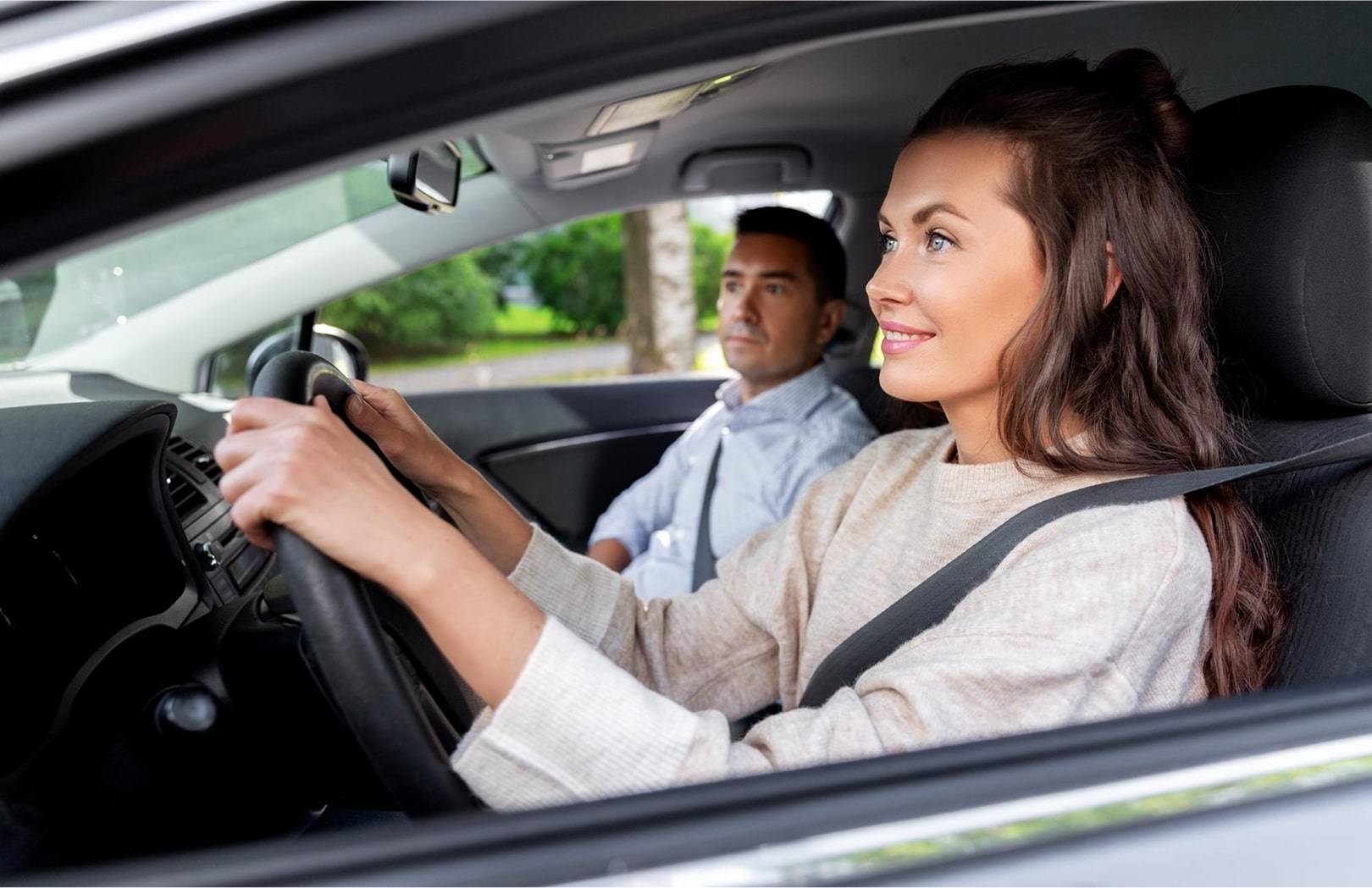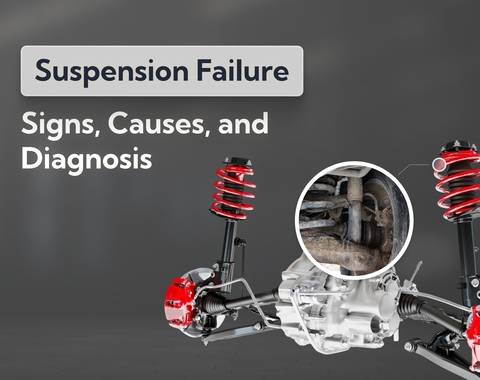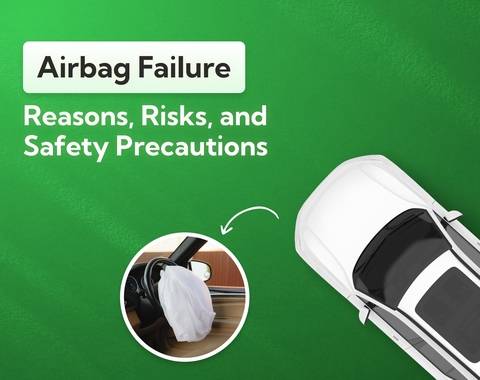Learner Driver Insurance Explained
If you’re learning to drive and want to practice in a friend or family member’s car, you’ll need your own insurance policy to stay legal and covered. Learner driver insurance is flexible, short-term cover designed exactly for this, so you can get extra practice without risking someone else’s no-claims bonus.
Last updated: 10th October, 2025

Anthony Sharkey is COO at New Reg Limited (Car.co.uk, Trader.co.uk, Garage.co.uk), driving innovation in vehicle recycling, logistics, and customer experience.

Listen to this story
Driving lessons with an instructor are only part of the story. To really build confidence behind the wheel, learners need extra time on the road with a parent supervising and instructing. But here’s the catch: you need insurance to do it legally, just like everyone else on the road does.
That’s where learner driver insurance comes in. It’s a specific type of policy designed to cover you while you’re still working toward your full license. Unlike standard car insurance, it’s short-term, flexible and tailored to people who are still on a provisional license.
In this guide, we’ll break down what learner insurance covers, how it works, how much you can expect to pay and how to find the right policy for your situation.
What's in this article
What is learner driver insurance?
Learner driver insurance is a form of short-term, temporary insurance you can take out to cover you while you practice driving with people other than a qualified driving instructor. Many insurance providers offer this type of cover for learners and some policies are very flexible, allowing you to take insurance for anywhere between two hours to five months. If you take out insurance for several months and pass your test early, most companies will refund the extra payment.
There will, of course, be conditions attached, such as a curfew or ban on night-time driving. The car you are practicing in must have full and separate annual insurance cover and some companies will not insure learner drivers using high value or high-performance cars. There will also be an excess, which is the amount you must pay towards the repairs in the event of an accident
Learner driver insurance ends as soon as you pass your test, so don’t try to drive home after passing unless you have arranged proper cover.
Do learner drivers need insurance?
Anyone who drives a car, whether it’s theirs or belongs to someone else, and whether they hold a full licence or a provisional, needs insurance. If you drive without the proper insurance, you can be banned from driving, receive up to eight penalty points and be given an unlimited fine even before you pass your test
By law, any car driven on public roads in the UK must be insured. If you use a professional driving school or a qualified instructor to teach you to drive in their car, you can be sure that they hold the proper insurance. A qualified instructor displays a green badge in their windscreen, while a trainee instructor displays a pink badge. These are the only people who are permitted to charge you for driving lessons. If anyone else asks for payment, they are breaking the law and could be reported to the Driver and Vehicle Standards Agency (DVSA).
If a friend or family member teaches you to drive, or takes you out for driving practice, there are certain laws that specifically apply to them:
- They must be more than 21 years old. Some companies won’t allow you to be supervised by anyone under 25.
- They must have a full driving licence, and have held it for at least three years. It must have been issued in the UK or a country in the European Economic Area (EEA).
- They must be qualified to drive the vehicle being used. For example, if they hold a licence for an automatic car, they cannot teach you in a manual car.
- They must supervise you with the care and attention they would use if they are driving the car themselves, so they can’t use a mobile phone or be under the influence of alcohol, for example.
- They must not be paid to teach or supervise you.
If you drive without proper supervision as outlined above, you can receive a substantial fine and six points on your licence.
You and your supervisor may assume that it’s OK for them to allow you to drive their car, but they should check with their insurance provider to ensure that they’re fully covered to supervise a learner driver. If not, they can add you onto their policy, or you can take out temporary or learner driver insurance just to cover the times you will be practicing. You can arrange this on a sessional basis, such as by the hour or the day, or take out a longer-term policy to cover you for up to three months.
If you have your own car, you must have an annual insurance policy. Check that this will cover the person supervising you on your driving practice. You may find that fully comprehensive insurance is a better option that third-party insurance, because many younger drivers opt for third party assuming it will be a cheaper option. This results in more claims on these policies, which in turn can actually make them more expensive.

How much is learner driver insurance?
Learning to drive can be an expensive business and there are some costs you simply cannot avoid. Applying for a provisional licence requires a fee for a start, although you can get a small reduction if you apply online. You can’t pass your test without paying to take it, you can’t drive unless someone teaches you, and you can’t drive without insurance.
Learner driver insurance is considerably more expensive than the price an experienced, older driver would pay. There are several ways to obtain insurance as a learner driver, and they will all involve expense. It’s up to you to weigh up the price you pay for each option against the value you derive from it.
Professional driving lessons are a major expense, but they do include insurance and will give you a good grounding in the proper techniques and skills you will need to both pass your test. An average learner driver needs around 45 hours of driving lessons, plus at least 20 hours of practice. By sticking to this method only, you may find yourself paying for up to 65 hours of driving lessons. Could you get better value by paying for learner insurance for those extra 20 hours?
Look into being a named driver. A relative or friend might agree to put you on their policy as a named driver, but this could incur extra expense for them as their premiums will undoubtedly increase.
What the experts say

Steven Jackson OBE
If you already have your own car, by law, you will need to take out full annual insurance. If you include an older, more experienced driver on your policy, this could reduce the price you pay. Under no circumstances should you list the older person as the main driver when the car actually belongs to you. This is called “fronting”. This is illegal and could lead to fines, points on your licence and future difficulties obtaining insurance.
Temporary short-term cover such as learner driver insurance may be an economical option, giving you flexibility without the need to commit to long-term arrangements or incur cancellation fees. It is very quick to arrange, will start immediately, and you can buy it by the hour, the day or any period of up to three or even five months. It also allows you the flexibility to practice with different named drivers as you are the person insured, so you can drive with a parent one day and a friend the next.
How to get insurance for a learner driver
First, do your homework. Decide which of the above routes is best for you and compare the prices and benefits offered by the many providers. There are some companies that offer insurance to young drivers under the age of 19, and they may be appropriate for you. Do you want continuous full cover for a period of three months, or do you just want to pay or the days you will actually be driving? Some providers offer this.
Comparing providers can be a long and tedious process, and due to the short-term nature of the product, learner driver insurance is not really compatible with comparison sites. Many packages are simply not listed on these sites, including at least one company which specialises in providing learner driver insurance for younger drivers, so you will need to do the legwork. The best way is to draw up a short list of possibilities then fill in a few basic details online to get an estimate of how much you can expect to pay. Some companies require more details than others, but it’s worth spending time to ensure you’re getting the best deal.
Whichever provider you choose, make sure it at least:
- Covers the owner’s car for at least its market value without affecting their no claims bonus
- Replaces the car in the event that it’s written off following an accident
- Provides adequate cover for injuries to third parties, such as pedestrians or passengers, or damage to property, which can potentially cost millions of pounds
Make sure you are paying the lowest possible rates by owning or practicing in a low-value, low-power car that falls into a low insurance group (1-3).
Do not “improve” your car or practice in a modified car. It might look the part, but it will significantly increase the price you pay.
Do have plenty of security such as immobilisers and alarms, as these can reduce your premiums.
Once you have chosen the appropriate provider, the rest is pretty straightforward. You’ll need to provide details such as your name, address and postcode. Postcode is particularly important because some areas are accident hotspots or places where car theft is an issue, which will impact your insurance and the rate you pay.
Remember that learning to drive should be enjoyable and stress-free, and a good insurance package can really put your mind at ease.
About Car.co.uk

Share on
Latest news & blogs










